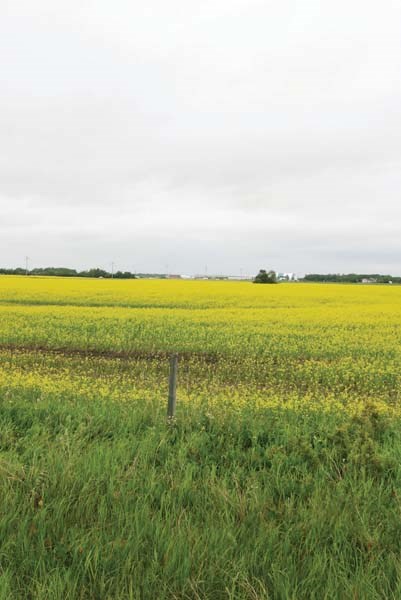A late season flux in bertha armyworms has forced farmers in the area to spray their canola crops with insecticides in order to avoid severe damage.
"Canola looks real good but just in the last week to week and a half there has been a real surge in bertha armyworms," explained Janet Montgomery, crop specialist at the Lakeland Agriculture Research Association (LARA), in Fort Kent.
Matt Janz, director of agriculture services for the MD of Bonnyville, explained in its larval form, the bertha armyworm can do significant damage.
"If you have high enough numbers they could probably clean out a canola crop within 3-4 days," he said.
Janz said farmers have been spraying farther south for up to a week now and that the worms must have migrated north.
The Bonnyville area deals with the bertha armyworm regularly, Janz added, but it is on about a five to seven year cycle that the numbers reach the "economic threshold," which takes into account the density of the pest and whether or not investing in spray treatment will provide an economic gain.
For the bertha armyworm, the threshold is 17 per square metre and according to Janz, farmers in the area have been finding numbers well above the threshold, causing them to invest in a control treatment.
"We thought we would have a little break before harvest here but it just turned things up a notch," said Dwayne Kalinski, a local farmer from the Bonnyville area who recently discovered the pest in his canola field.
"We haven't really dealt with them in the past. It's one of the first years that I can remember that I've had to spray for them. We've always had a bit of them but to my knowledge it's the worst of them we've had. We were just getting ready for harvest but we had to address that issue. If not addressed, it could be quite devastating to your pocket book."
Kalinski said it costs roughly between $12-$14 per acre between equipment and labour to apply a control chemical and that he would rather not spray at all because of the crops that get trampled in the process "but its well worth it because it pretty well knocks 'em (the bertha army worm) right out."
Kalinski joins numerous other farmers in the area who have started spraying their crops and according to Janz, as long as they stay on top of the problem they will avoid any severe losses.
"If the farmers have been on top of their game and have been scouting their fields and the numbers creeping up, they should be fine. As long as they can get somebody to come in and spray it, they'll have minimal loss," said Janz.
Janz said he is not exactly sure what could have brought the increased number of bertha armyworms into the area but it may have something to do with the air currents, which have also brought in another pest in the form of a fungus called aster yellow caused by the aster leafhopper.
"It all depends on the air currents and what brings in what bugs," explained Janz.
"I know there was a lot of leafhoppers that came in this year due to air currents and then that brought in another disease called aster yellow."
The leafhoppers transport the aster yellow's phytoplasma, a type of bacteria, from plant to plant. This causes the fungus to develop, which can stunt crop growth.
Unlike the bertha armyworm though, the aster yellow can't be sprayed for and is difficult to predict. Fortunately, Janz said the fungus is minimal in the area and won't result in a huge yield loss.
"I think the loss is minimal, I think maybe a 10 per cent yield reduction. Not a huge reduction but still a little bit of reduction depending on how bad the disease is in the field but I haven't seen any terrible, terrible fields with it. There's just a hint here and there of it."
Besides the presence of the two pests though, crops in the area have been in relatively good shape.
According to Montgomery, besides the trouble it causes when bringing in hay, the amount of rain the area has had this summer has kept everything in good standing order.
"We've had quite a bit of rain this year. It was a dry spring, but then once the rain started we've had quite a bit of it. It's been a challenge in terms of getting hay in because lots of people have had their hay rained on but for standing crops that much moisture is really good."
Janz said crop production overall this season is looking like it will be normal or above normal but there is still too much time left to make any concrete predictions.
"Overall, things look good at this point but the grain's not in the bins yet, things aren't combined, lots still can happen before it gets in the bin but if things look good weather wise, I think there's probably enough moisture to fill up all the crops and to make the grain kernels nice and plump. They should be fine if we get some nice warm weather."



